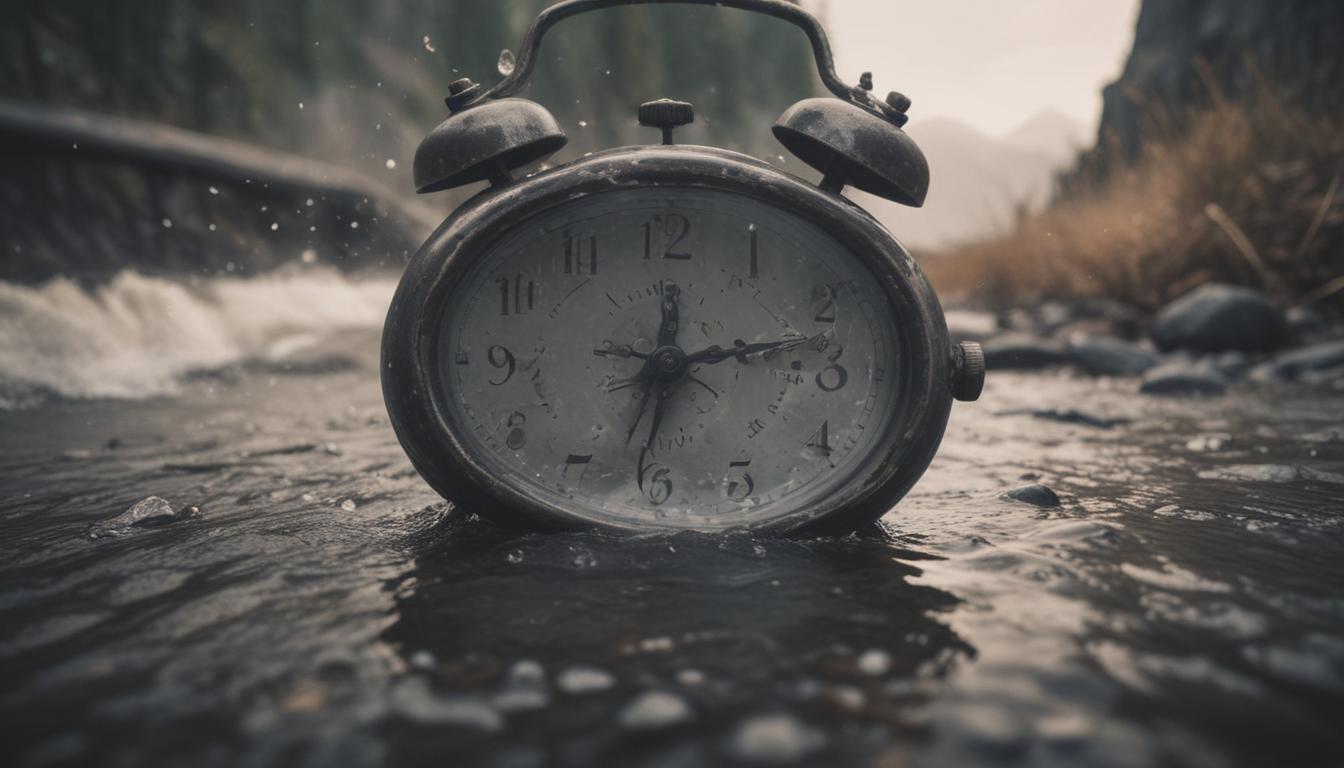Now Reading: Master Flow for Performance and Joy
- 01
Master Flow for Performance and Joy
Master Flow for Performance and Joy

Finding Your Flow State Optimal Performance and Enjoyment
Have you ever looked up at the clock after a period of intense work and realized that hours have passed by in what felt like minutes? Do you struggle with the constant pull of notifications, a wandering mind, and a to-do list that seems to grow no matter how hard you work? This feeling of being busy yet unproductive is a common pain point in our hyper-connected world. We strive for efficiency but often end up feeling drained, distracted, and dissatisfied with our output. The constant context switching between emails, messages, and tasks leaves us feeling fragmented and far from our best.
Imagine a different reality, one where you are so completely absorbed in an activity that the rest of the world melts away. In this state, your actions and awareness are seamlessly merged. Work feels less like a chore and more like an enjoyable game. This is not a mythical state of being reserved for elite athletes or master artists. It is a scientifically recognized psychological state known as “flow,” and it’s accessible to everyone. This guide will show you exactly what flow is and provide you with the practical tools you need to find it, allowing you to unlock higher levels of performance and bring a profound sense of enjoyment back into your work and life.
Understanding the Power of Flow
The concept of “flow state” was first identified and named by psychologist Mihaly Csikszentmihalyi. He described it as an optimal state of consciousness where we feel our best and perform our best. When you are in flow, you are “in the zone.” You experience an energized focus, a full involvement, and a deep enjoyment in the process of the activity. It is the experience of being so engaged in a task that you lose track of time, forget your worries, and even lose your sense of self. Your concentration is so absolute that all irrelevant thoughts and distractions are pushed out of your mind.
This powerful state is not just about feeling good; it is directly linked to peak performance and skill development. When you are in flow, your brain is working in a highly efficient and cohesive manner. You are able to process information more quickly, make creative connections, and execute tasks with precision and ease. It is the state where learning accelerates, creativity flourishes, and productivity soars. Rather than fighting against distraction and procrastination, you are pulled forward by the intrinsic motivation of the task itself, creating a positive feedback loop of accomplishment and satisfaction.
The Three Pillars of Achieving Flow
Entering a state of flow is not a random occurrence; it is a process that can be intentionally cultivated. Csikszentmihalyi identified several key conditions that must be met for flow to happen. Understanding these core components is the first step toward making flow a more regular part of your life. They provide a framework for structuring your tasks and your environment in a way that is conducive to deep, uninterrupted focus. By consciously engineering these conditions, you move from hoping for focus to creating it.
Setting a Crystal Clear Objective
One of the biggest barriers to flow is ambiguity. If you don’t know exactly what you are trying to accomplish, your mind will wander in search of direction. Vague goals like “work on the report” or “study for the exam” are invitations for distraction. To enter flow, you need a very specific, well-defined goal for your session. Instead of “work on the report,” your goal should be “write the 500-word executive summary and create the two main charts.” This clarity eliminates mental friction and gives your brain a single, unambiguous target to focus on.
This clear objective acts as a compass for your attention. It tells you exactly what to do next and provides a structure for your efforts. Before you begin any important task, take two minutes to define a precise, measurable outcome for that work session. What does “done” look like for the next 60 or 90 minutes? Writing this goal down can make it even more powerful. When your mind knows the destination, it is far less likely to get sidetracked on detours, allowing you to immerse yourself fully in the journey of getting there.
Balancing Challenge and Skill
The second pillar of flow is arguably the most important: it is the perfect balance between the challenge of the task and your current skill level. If a task is too easy, you will quickly become bored and your mind will seek out more interesting stimuli. If a task is overwhelmingly difficult, you will become anxious, stressed, and discouraged. The flow state exists in the narrow channel between boredom and anxiety. It is the sweet spot where the task is challenging enough to hold your full attention but not so difficult that it feels impossible.
This means you must engage in activities that stretch your abilities just a little. Think of it like a video game. The most engaging games present you with levels that are slightly harder than the last, requiring you to learn and adapt to succeed. To find flow, you need to be your own game designer. If a task feels too hard, break it down into smaller, more manageable steps. If it feels too easy, find a way to add a layer of challenge, such as setting a time limit or aiming for a higher standard of quality. This dynamic balance keeps you engaged and promotes continuous growth.

Your Practical Toolkit for Entering Flow
Knowing the theory is one thing, but putting it into practice is what truly matters. Cultivating flow requires a deliberate and strategic approach to how you manage your time, your environment, and your attention. The first step is to create a fortress against distractions. Our modern world is designed to steal your focus. To reclaim it, you must be ruthless. This means turning off your phone or putting it in another room. Close all unnecessary browser tabs and turn off email and social media notifications. Create a dedicated workspace that signals to your brain that it is time for deep work.
Beyond managing your external environment, you also need to prepare your internal environment. Develop a pre-work ritual to transition into a state of focus. This could be as simple as a few minutes of deep breathing, a short walk, or listening to a specific song or type of music that helps you concentrate. Techniques like time blocking, where you schedule a specific, uninterrupted block of time for a single task, are incredibly effective. During this block, you commit to working only on that one thing. This structure protects your time and trains your brain to sustain focus for longer periods, making the ideal conditions for flow a regular part of your day.
The Lasting Rewards of a Flow Centered Life
Finding your flow state offers benefits that extend far beyond a single productive afternoon. When you regularly engage in activities that put you in a state of flow, you are essentially engaging in a highly focused form of practice. This accelerates skill development and leads to a sense of mastery in your chosen field. The consistent challenge and feedback inherent in the flow state push you to grow and improve continuously. Work stops being something you just have to get through and becomes a source of personal growth and professional excellence.
Ultimately, the pursuit of flow is the pursuit of a higher quality of life. The feelings of control, engagement, and deep enjoyment that accompany flow contribute significantly to overall happiness and well-being. By intentionally building more flow into your life, you are not just becoming more productive; you are crafting a more meaningful and satisfying existence. You are replacing feelings of anxiety and boredom with competence and joy. The journey to finding your flow is a journey toward becoming a more skilled, fulfilled, and happier version of yourself.

































